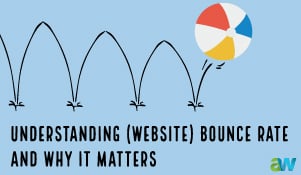The official “beginning” of the Internet is debatable, but whether you attribute the birth of the Internet to 1968 or 1982, there is no question it has evolved, and dramatically so! As the web has “grown up,” so have the web surfers—your clients, strategic partners, employees, and even competitors. Their patience (or impatience) level, viewing preferences, and expectations have changed. Couple that with dramatic technology changes in web browser and anti-virus software, pop-up blockers, online utilities, and increased security, and you have the web in 2007.
The question is, what is your website in 2007? And how effective is it in the bigger, better web of today? Over the past couple of years, many companies have responded to more sophisticated expectations of their website visitors by dramatically adding to their websites. From new functionality to document downloads, rich media, and just plain “stuff” (a.k.a., miscellaneous pages), some websites have grown into massive, navigational nightmares—Web beasts.
Have you heard this said about your website? “I’m sure it’s on the website somewhere, but I couldn’t find it.” Or, have you received requests for documents that you know you have made available online? When you add to your website, are you also removing content and documents which are not regularly used, or which have become outdated? Have your company “archives” moved off the back pages and sprawled their content across the entire site? If so, you may have a Web Beast—an overgrown maze of documents, news items, and mismatched formatting.
The New Trend – Less is More
In a time when surfers expect to find everything they need on the web, how do you know when “enough” becomes “too much”? Outside of direct feedback from your clients, a key indicator is whether or not you are achieving quantifiable results from your site. If you have downloads available, how often are they taken? If you have direct response forms, how often are they used? Are there pages or sections of your website that are not viewed at all? Your Web site statistics should reveal this information and more.
Many companies are now re-evaluating the effectiveness of their Web content and functionality by going back to the basics—their business objectives. Who are your target markets? What services and information might they be looking for online? Can you enhance your services to them, or streamline the process of doing business with you through the use of your website?
Outside of your target market(s), who else uses your website? Strategic partners? Investors? The Media? Employees? What information or services are vital to serving these audiences?
I am not suggesting that every site that has overgrown its original structure be demolished. You could backtrack and try to regain some measure of control by removing those tacked-on pages, but that ignores the fact that those changes were made for a reason—the existing site no longer meets the needs of your organization. A restructuring of content may be possible, but you may also benefit from starting with a clean slate. Whether you are beginning anew, or simply “cleaning house” and restructuring, the following steps will help ensure that your improved site is an effective tool for your business.
Assessment
First and foremost, what are your core products or services? These should be immediately identifiable, and the most prominent—visually and structurally, on the site. All other sections should support these pages. Is there an action you want visitors to take? That is, to visit your online store, to request an appointment or service call, enroll in a program, or download a document? If so, there should be a call to action—button, ad, or link—which is clearly visible to direct traffic to do so.
Would your site be more effective if it were organized according to the types of visitors you expect? Do you serve or offer specialized services to specific market segments, such as commercial, industrial, institutional and educational? Or could you split your content according to clients, vendors, applicants, and media? The means of structuring your site is less important than the method: that it be clearly and intuitively navigable.
Keeping the Beast in Its Cage
Once you have “tamed” the site, you’ve got to keep the Beast in its cage. That is, prevent the site from becoming unwieldy as it (and your business) grows and changes. Your structure should have some breathing room to accommodate those changes as they happen, without requiring another site redevelopment and without “breaking” the structure by putting information up wherever there seems to be an inch of space. Think about changes that may occur over time, and allow for places on the site to announce “late breaking” news, specials, events, and updates—which may be removed after a period of time, to be replaced by the most current information. In addition, develop a plan for periodic review of the site, its structure, and results achieved. Updating of the site, whether in-house or outsourced, should follow a structured program with one or more persons who are delegated responsibility for ongoing maintenance.
Adrienne Cregar Jandler is the president of Atlantic Webworks, a web development firm focused on increasing its clients’ NET value through results-driven websites. In addition, the firm offers comprehensive marketing, multimedia, database development, and website maintenance services. Learn more about Atlantic Webworks at www.atlanticwebworks.com.









Leave a comment